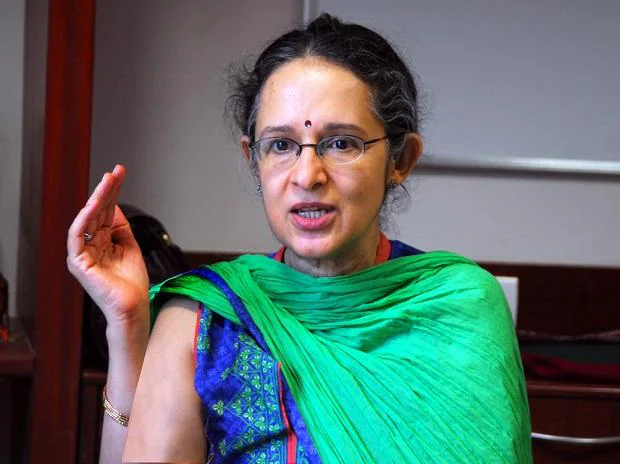[ad_1]
The Reserve Bank of India’s (RBI’s) policy decisions to tame headline inflation has been in the right direction as it has approached the inflation originating from food price shocks pragmatically, said Ashima Goyal, external member of the monetary policy committee (MPC) that decides on the policy rates.
India’s retail inflation has been above the RBI’s upper tolerance limit of 6 per cent for eight consecutive months. In August, the retail inflation inched up to 7 per cent from 6.71 per cent in July driven by higher food prices, putting pressure on the central bank to further increase policy rates later this month.
In a working paper on “What drives inflation? Demand or Supply”, authors Goyal and Abhishek Kumar have argued that inflation shock is still a predominantly supply shock — originating and operating through food inflation. Central banks need to respond to such inflation under an inflation targeting regime, which leads to a permanent change effect on output, the paper stated.
According to the authors, inflation originates as a supply shock but becomes more demand-driven in the medium run due to the lagged effect of interest rate tightening that may be reducing supply more than it reduces demand. “Excess tightening would not improve credibility if excess demand due to supply-side deterioration causes inflation,” they said.
The six-member MPC has raised the policy repo rate by 140 basis points since May to bring down headline inflation. The RBI has been given an inflation targeting mandate, wherein they have an inflation target of 4 per cent with the upper tolerance level of 6 per cent and the lower tolerance level of 2 per cent.
According to RBI forecasts at its review in August, CPI inflation is seen at 6.4 per cent in October-December and 5.8 per cent in January-March, before falling to 5 per cent in the first quarter of the next fiscal year.
In the April monetary policy, after tensions in east Europe resulted in a rise in inflation globally as well in the country, the MPC did not move to hike rates. It, instead, unanimously decided to remain accommodative while focusing on withdrawal of accommodation to ensure that inflation remains within the target going forward, while supporting growth. In the sequence of priorities, however, it put inflation before growth.
Though the key policy rates were not touched, the central bank was mindful that the time had come for short-term rates to inch up. As a result, the RBI deployed the Standing Deposit Facility.
A month later, in a surprise move, the MPC unanimously decided to increase the repo rate by 40 bps in an off-cycle meeting, citing inflation concern, the first repo rate hike in 45 months. Subsequently, the MPC has increased twice in as many meetings to bring down inflation.
In the August monetary policy, RBI Governor Shaktikanta Das had said that consumer price inflation had peaked and was expected to moderate going forward. Early this month, Das had reiterated that India’s consumer price inflation would moderate in the coming months, even though some of the monthly prints may be “bumpy”. The expectation is inflation will moderate in the second half of this year, and then move within the tolerance band in the fourth quarter of this year and then move to even lower levels in the first quarter of the financial year 2023-24, he had said.
[ad_2]
Source link



